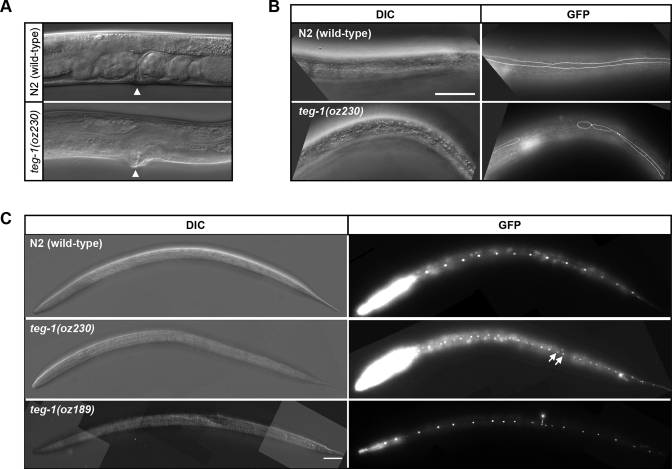Figure 1.
teg-1 mutants display heterochronic phenotypes. Mutations in teg-1 lead to somatic phenotypes, such as abnormal vulva morphology (A), defective seam cell syncytium formation (B) and over-replication of seam cells (C). (A) 62% of teg-1(oz230) mutants have a mild protruding vulva phenotype (n = 88), whereas 100% of the N2 (wild-type) animals do not (n = 50). Arrow head indicates the location of vulva. (B) Incomplete fusion of lateral seam cells in teg-1 mutants results in gaps in the seam cell syncytium. Scale bar = 50 μm. (C) Over-replication of hypodermal seam cells results in formation of paired nuclei marked by arrows in teg-1 mutants. Each control animal has exactly 16 seam cells, whereas an average of 18 and 20 seam cells were found in teg-1(oz189) and teg-1(oz230) mutants, respectively. Seam cell membranes (B) and nuclei (C) are marked by AJM-1::GFP and SCM::GFP, respectively.

